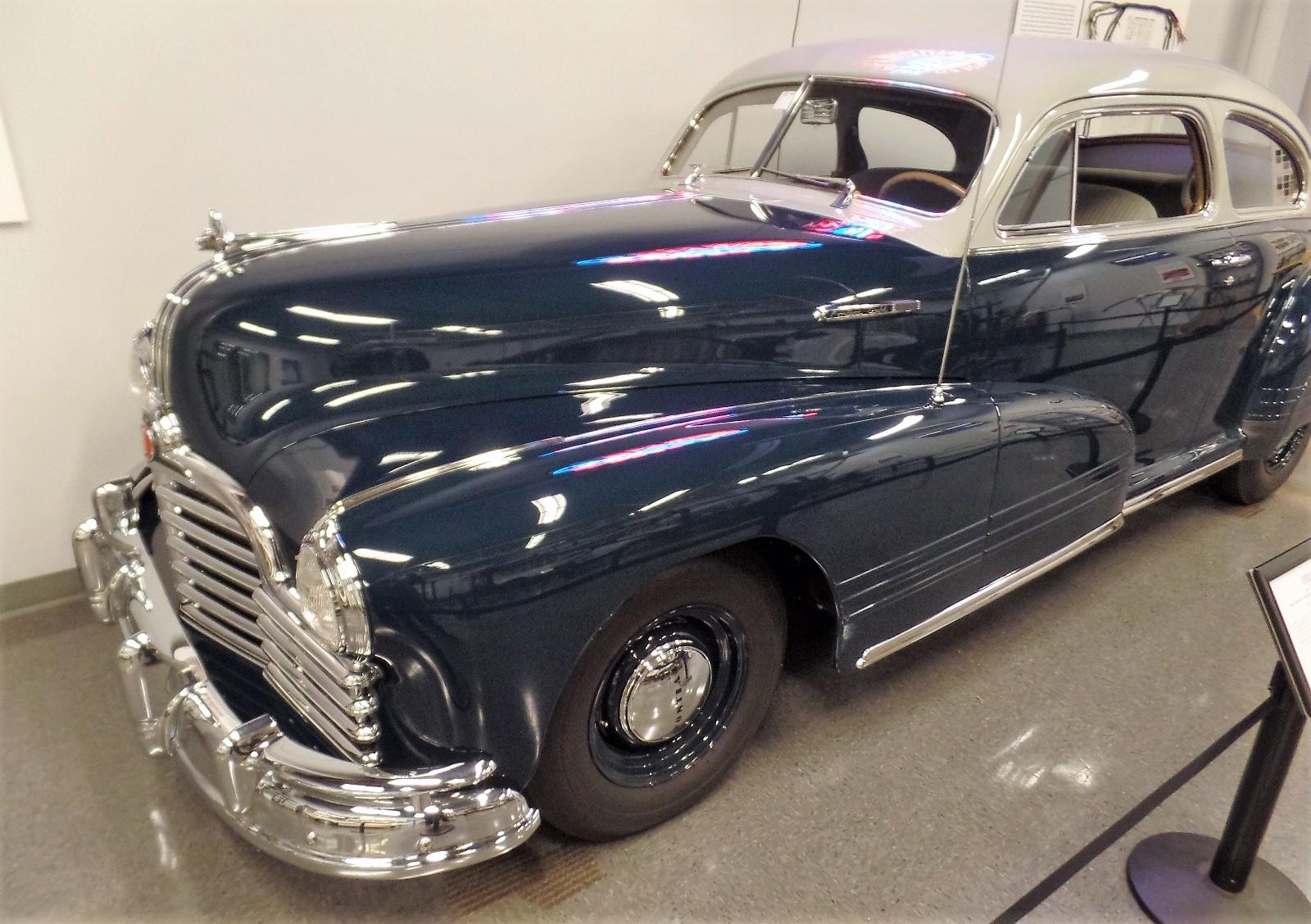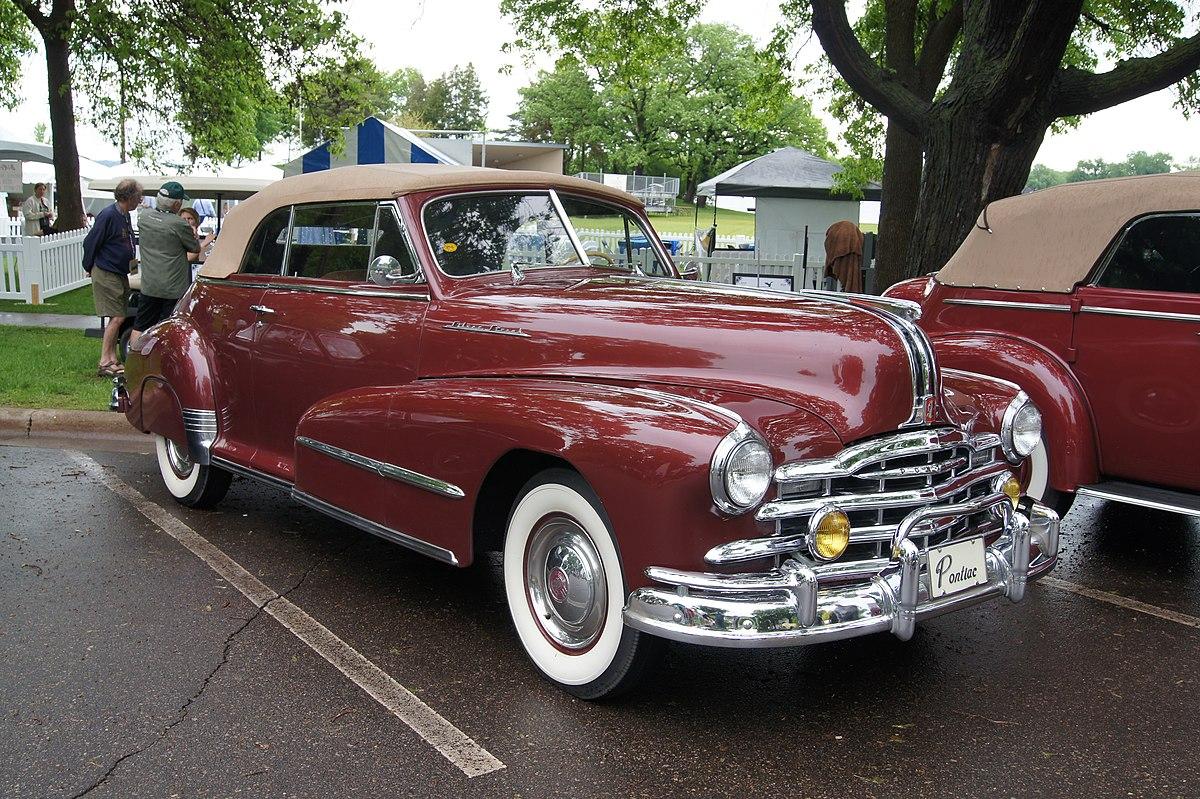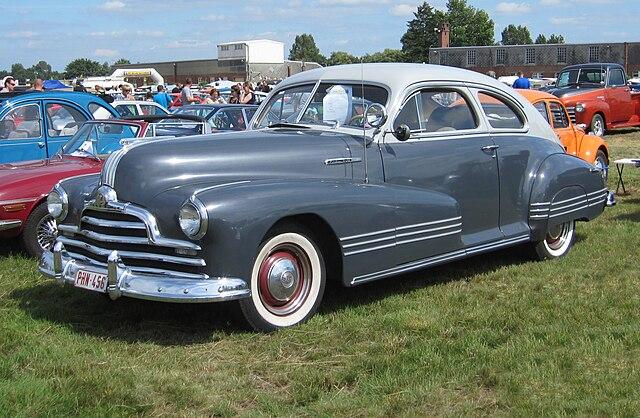1946 Pontiac 2507

The descriptions of the Classic Cars in the Directory were partly generated or supplemented with the help of artificial intelligence (AI). The content may occasionally not always be entirely accurate or factually correct despite careful checking.
The Pontiac 2507 1946 is an iconic and classic car that features a range of technical specifications that make it an impressive vehicle for its time. This car boasts a massive body style with a length of 200 inches, a width of 75 inches, and a height of 65 inches, making it a spacious and comfortable ride for passengers. The vehicle sits on a wheelbase of 122 inches and can comfortably accommodate six passengers.
Under the hood, the Pontiac 2507 1946 is powered by a 239 cubic inch straight-six engine. This engine is capable of generating up to 90 horsepower at 3600 rpm and 180 lb-ft of torque at 2000 rpm. The engine has been designed with precision engineering and features a cast iron block and cylinder heads, overhead valves, and a five-bearing crankshaft. The engine is mated to a three-speed manual transmission with a column shift, which provides drivers with precise and smooth shifting capabilities.
The suspension system of the Pontiac 2507 1946 has been designed to deliver a smooth and comfortable ride, regardless of the terrain. The car features independent front suspension that uses coil springs and control arms, while the rear suspension is a live axle with longitudinal leaf springs. The front and rear suspension also features hydraulic shocks, which enhances the vehicle's overall ride quality.
One of the defining features of the Pontiac 2507 1946 is its unique and stylish exterior design. The car features a wide grille with horizontal bars and the classic Pontiac emblem, along with stylishly curved fenders and a sloping rear deck lid. The car also features classic design cues such as the torpedo-shaped headlights, which add to its classic appeal.
Inside the cabin, the Pontiac 2507 1946 is a spacious and comfortable ride with plenty of room for passengers. The car features a stylish dashboard with easy-to-read gauges and a large steering wheel that provides excellent feedback and control. The car is also fitted with a range of convenience features, including an AM radio, electric clock, dome light, and cigarette lighter.
In conclusion, the Pontiac 2507 1946 is an impressive vehicle with a range of technical specifications that make it one of the standout cars of its time. This car features a powerful engine, smooth transmission, comfortable suspension, and a unique exterior design that continues to turn heads today. Whether you are a classic car enthusiast or simply a lover of great automobiles, the Pontiac 2507 1946 is a must-have in any collection.
Milestones
- Introduction of the Pontiac 2507 in 1946 as part of the post-WWII boom in auto sales - Equipped with a 6-cylinder engine producing 90 horsepower - Offered in two models, a sedan and a convertible - Featured a more modern and sleek body design compared to previous Pontiac models - Included amenities such as a heater, defroster, and push-button radio as standard equipment - Marked the beginning of Pontiac's transition towards more powerful V8 engines in the following years - Served as a popular choice for families and commuters alike, cementing Pontiac's reputation as a reliable and affordable car brand.Technical
• Engine Type: Inline-8 • Displacement: 4.1 L (250.7 cu in) • Bore x Stroke: 3.25 in × 4.375 in (82.6 mm × 111.1 mm) • Compression Ratio: 6.5:1 • Power Output: 90 hp @ 3400 rpm • Torque Output: 173 lb-ft @ 1600 rpm • Valve Configuration: Overhead valve (OHV) • Fuel Delivery: Single 1-barrel carburetor • Cooling System: Liquid-cooled • Transmission: 3-speed manual • Wheelbase: 120 in (3,050 mm) • Curb Weight: 3,425 lb (1,554 kg) • Suspension: Independent front suspension with coil springs, solid axle rear suspension with leaf springs • Brakes: Hydraulic drum brakes front and rear • Steering: Manual recirculating ball steering • Fuel Tank Capacity: 18 US gallons (68 L) • Top Speed: 90 mph (145 km/h)

